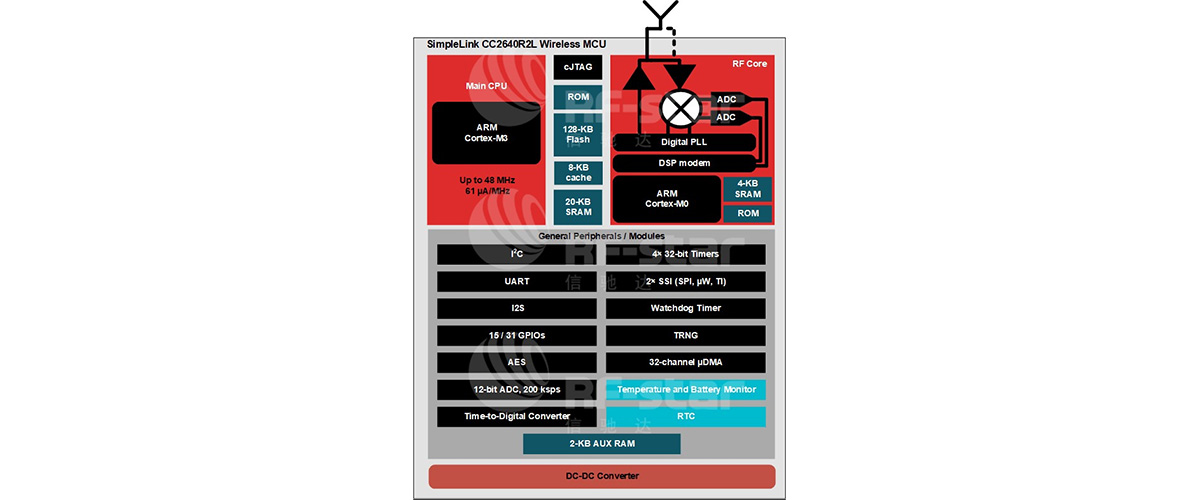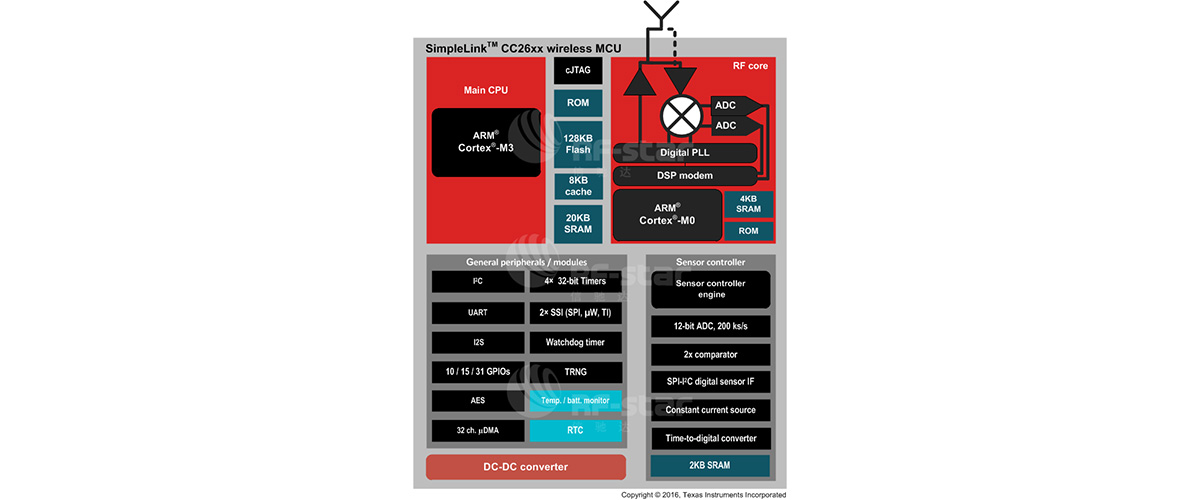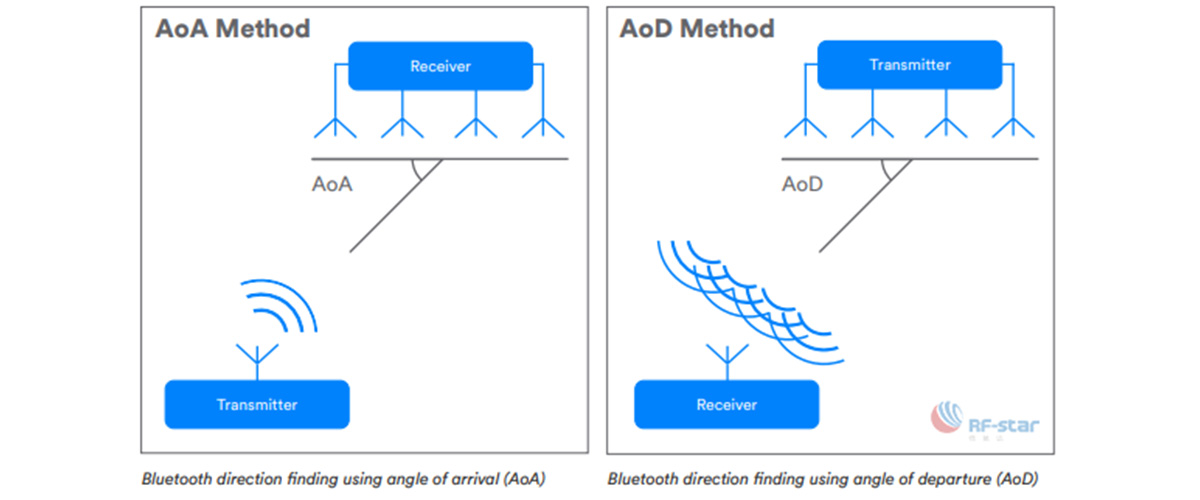Judging from the Bluetooth protocol supported by the chip, CC2640R2F supports BLE 5.0 protocol, and CC2640R2L supports BLE 5.1 protocol. CC2640R2L can use AOA/AOD for indoor positioning, which is very suitable for improving the performance of Internet of Things (IoT) applications.


Microcontroller
Powerful Arm® Cortex® -M3Up to 48 MHz clock speed275 KB of nonvolatile memory including 128 KB of in-system programmable flashUp to 28 KB of system SRAM, of which 20 KB is ultra-low leakage SRAM8 KB of SRAM for cache or system RAM useSupports over-the-air upgrade (OTA)
RoHS-compliant packages
5 mm × 5 mm RHB VQFN32 (15 GPIOs)7 mm × 7 mm RGZ VQFN48 (31 GPIOs)
All digital peripheral pins can be routed to any GPIOFour general-purpose timer modules (eight 16 bit or four 32 bit timers, PWM each)UART, IIC, and IISReal-time clock (RTC)AES-128 security moduleIntegrated temperature sensor
Wide supply voltage rangeNormal operation: 1.8 V to 3.8 VExternal regulator mode: 1.7 V to 1.95 V
2.4-GHz RF transceiver compatible with Bluetooth low energy 5.1 and earlier LE specificationsExcellent receiver sensitivity (–97 dBm for BLE), selectivity, and blocking performanceProgrammable output power up to +5 dBmSingle-ended or differential RF interface

Powerful Arm® Cortex® -M3Up to 48 MHz clock speed275 KB of nonvolatile memory including 128 KB of in-system Programmable FlashUp to 28 KB of system SRAM, of which 20 KB is ultra-low leakage SRAM8KB of SRAM for cache or system RAM useSupports over-the-air upgrade (OTA)
2.7 mm × 2.7 mm YFV DSBGA34 (14 GPIOs)4 mm × 4 mm RSM VQFN32 (10 GPIOs)5 mm × 5 mm RHB VQFN32 (15 GPIOs)7 mm × 7 mm RGZ VQFN48 (31 GPIOs)
All digital peripheral pins can be routed to any GPIOFour general-purpose timer modules (eight 16 bit or four 32 bit timers, PWM each)12 bit ADC, 200MSPS, 8 channel analog MUX
Wide supply voltage rangeNormal operation: 1.8 V to 3.8 VExternal regulator mode: 1.7 V to 1.95 VShutdown: 100 nA (wake up on external events)
2.4 GHz RF transceiver compatible with Bluetooth® Low Energy 5.1 and earlier LE specificationsExcellent receiver sensitivity (–97 dBm for BLE), selectivity, and blocking performanceProgrammable output power up to +5 dBmSingle-ended or differential RF interface
RF-star has launched the CC2640R2L module, which has a lower cost and high performance. As early as January 21st, 2019, the Bluetooth SIG announced the Core specification 5.1, introducing the long-awaited AoA/AoD features. AoA/AoD is a positioning algorithm based on angle of arrival angle/ angle of departure. The Bluetooth 5.1 device senses the arrival /departure direction of the transmitting node signal, and calculates the relative position or angle between the arrival node and the departure node. Then use triangulation or other methods to calculate the location of the unknown node, which is very suitable for indoor positioning applications of the Internet of Things.

Now more and more manufacturers support the Bluetooth 5.1. Bluetooth 5.1 has many advantages in indoor positioning. The module with CC2640R2L chip has a lower cost and supports BLE 5.1, which can meet more needs of users. For example, the strong comprehensive performance RF-BM-4077B1L and RF-BM-4055B1L module launched by RF-star.
RF-star has focused on the Bluetooth field for ten years and has rich experience in solution design. The Bluetooth module of RF-star Technology performed pretty well.